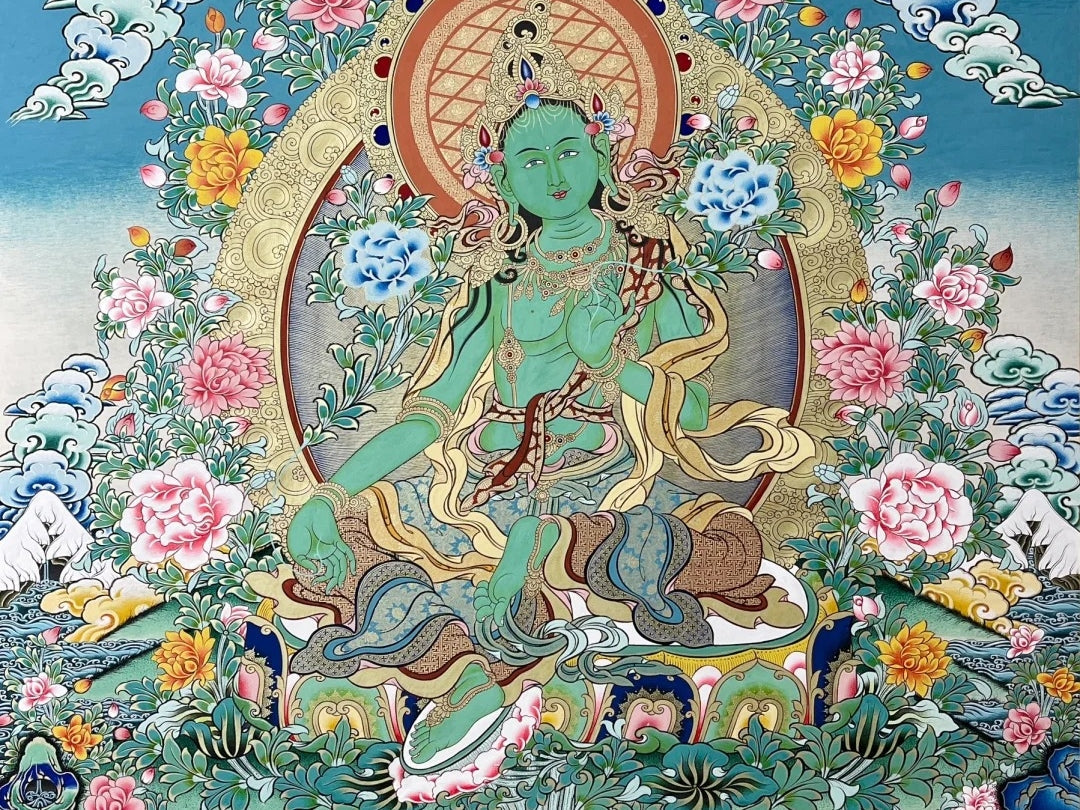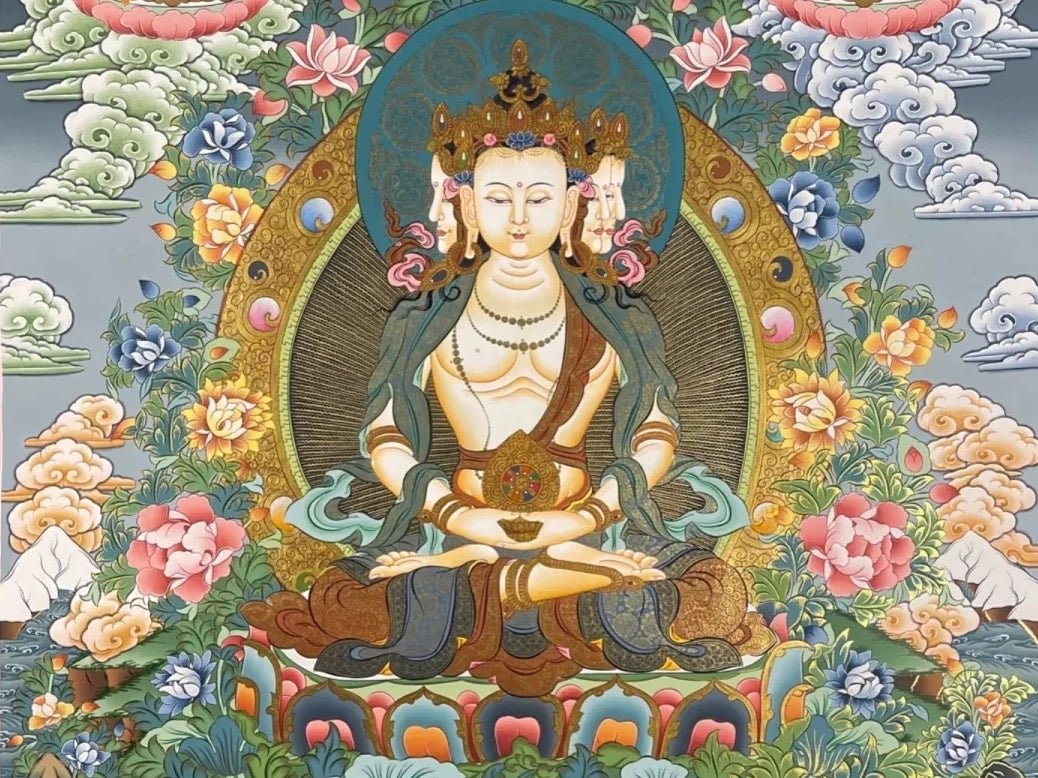Tibetan Thangka paintings are known for their intricate details, vibrant colors, and unique style that sets them apart from other forms of art. Thangka jewelry, particularly Thangka necklaces and pendant necklaces, reflects the profound beauty of these sacred artworks. Below, we explore some key features that define the art of Thangka and how they connect with Thangka jewelry, making each piece both visually captivating and spiritually significant.
Symmetry and Central Focus
The central figure of Thangka paintings typically features deities or spiritual icons, often depicted as the Buddha or other important figures in Buddhism. These central figures are surrounded by smaller characters, scenic elements like landscapes, or symbols like clouds and rainbows. The layout carefully balances simplicity and complexity, making the primary image stand out—an effect also mirrored in Thangka jewelry, which often highlights a central deity or symbol.

The Art of Line Drawing
Line drawing is an essential technique in Tibetan Thangka art, inherited from ancient Tibetan aesthetics. Artists use this method as the foundation for creating Thangka paintings, and the quality of line work is a key factor in determining the artist’s skill. Fine linework, such as "iron-wire drawing" (铁线描) and "delicate silk tracing" (游丝描), is particularly evident in the creation of detailed figures. This meticulous technique also finds its way into Thangka pendant necklaces, which often feature finely drawn, intricate details that reflect the artist’s craftsmanship.

Bold Colors and Strong Contrast
One of the most striking features of Thangka art is its bold and vivid colors. These colors are derived primarily from natural pigments like mineral and plant-based dyes, which are known for their purity and long-lasting vibrancy. As a result, Thangka paintings maintain their brightness for centuries, even under harsh environmental conditions. Tibetan people’s love for bright red, yellow, blue, green, and white is deeply rooted in their high-altitude surroundings, where the purity of natural colors is particularly striking. These colors are also imbued with religious symbolism, often representing spiritual qualities or elements. In Thangka jewelry, such colors often feature prominently, symbolizing various aspects of Tibetan Buddhism.

The Use of Gold in Thangka Art
A hallmark of Tibetan Thangka art is the use of gold in both paint and embellishment. Gold outlines, gilding, and other decorative uses of gold create a shimmering effect that adds depth and radiance to the artwork. In Thangka jewelry, this use of gold continues, enhancing the brilliance of the piece and giving it a luxurious, sacred feel. Gold accents often highlight key features of the pendant necklace, making the design more visually impactful.
Decorative Flourishes and Attention to Detail
Thangka paintings often depict not only deities but also animals, birds, and intricate natural elements like mountains, rivers, and clouds. These are stylized and arranged in a way that is more symbolic than realistic, reflecting the spiritual nature of the artwork. The elaborate patterns and careful attention to detail seen in Thangka art carry over into the craftsmanship of Thangka jewelry. For example, flames, lotuses, or flowing ribbons that adorn the edges of a painting may also appear as motifs in Thangka pendant necklaces.

Broad Range of Themes
Thangka paintings cover a wide variety of themes, from Buddhist deities and historical figures to everyday life and natural scenery. Whether it’s depicting the life of the Buddha or illustrating Tibetan legends, the versatility of Thangka art is remarkable. Thangka jewelry, particularly the necklaces and pendants, often draws from these same themes, symbolizing protection, wisdom, and compassion.
Unique Framing and Mounting
Thangka paintings are typically framed in luxurious silk and brocade fabrics, which elevate their sacred significance. These frames often feature a combination of red, yellow, and blue, representing both spiritual and aesthetic principles. In the world of Thangka jewelry, similar attention is paid to detail, with designs incorporating traditional Tibetan patterns and materials that evoke the richness of the culture.
A Sacred Tradition
Thangka paintings, especially those used in religious ceremonies, are often consecrated through a sacred ceremony before they are displayed. This "opening of the eyes" ceremony, known as "Kaiguang" (开光), blesses the painting and transforms it into a spiritually powerful object. Similarly, Thangka jewelry, when created with reverence for the spiritual origins of the art, can hold a deeper spiritual significance for the wearer.

Tibetan Thangka art has deep spiritual and artistic significance, and this is reflected in the intricate designs and sacred motifs found in Thangka jewelry. From vivid colors to the delicate use of gold, each piece carries centuries of tradition and meaning, making it a powerful symbol of Tibetan Buddhist culture. Whether you're drawn to the artistic beauty or the spiritual connection, Thangka pendant necklaces and Thangka jewelry bring a piece of this timeless art form into everyday life.



